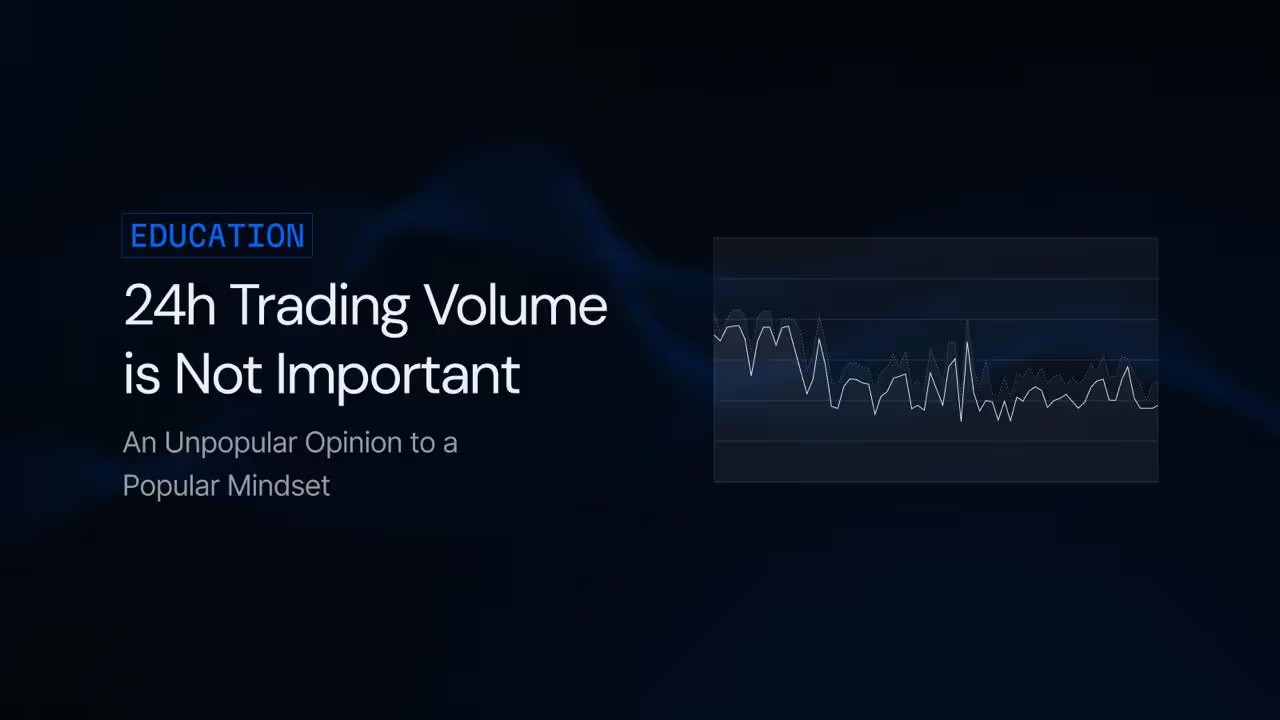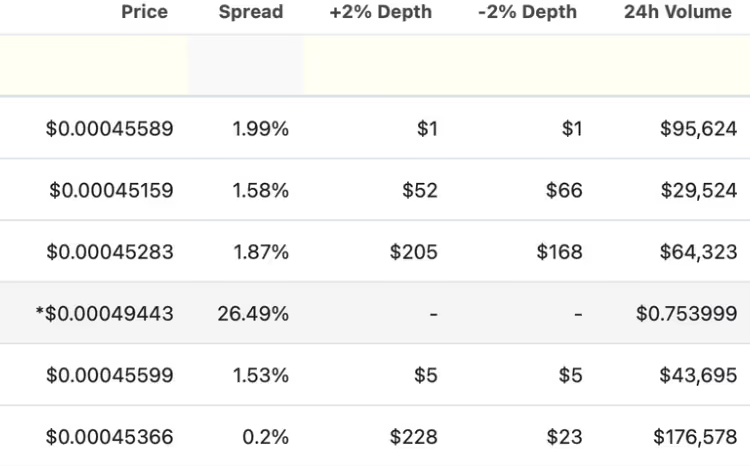Unpopular opinion - 24h trading volume is not important
When it comes to evaluating a crypto project's success, the 24-hour volume is often touted as one of the more important metrics project of success, but...


Intro
When it comes to evaluating a crypto project's success, the 24-hour volume is often touted as one of the more important metrics project of success. However, is it really the most significant criterion? While high 24-hour volume may indicate that other traders are interested in buying and selling the asset, it is important to understand that this metric can be easily manipulated by wash-trading practices. Therefore, it may not hold as much value as we might think and should deserve less focus.
What value does 24h volume have
24h volume refers to the total $ value transacted in the past 24 hours. This metric is often used to determine the success of a project and it's "perceived" attractiveness. Projects often aim to increase trading volume to appear attractive and draw in new traders.
High trading volume signals interest in the project's token. As much as 24h probably does attract traders, projects often put too much emphasis on the trading volume, and not enough on liquidity.

Trading Volume often fake
When we look at projects Coingecko statistics, we often see results like these:

We recommend reading this article about the meaning of spread, +2% depth and -2% depth.
When we track liquidity more closely using our in-house tracking system, we often find that the reported 24-hour volume of a project is fake and produced through wash-trading. Wash-trading occurs when a user buys and sells against itself to boost trading volume. This can easily be achieved by placing a buy-limit order and a sell-limit order on the orderbook that cross each other.
Projects (and exchanges) do this to appear attractive to users and traders. However, it could also be due to exchanges' 24-hour volume requirements. In order to maintain a listing, some exchanges require projects to have a minimum 24-hour volume. If these requirements are not met for a specific duration, there is a risk of delisting.
What is the difference between trading volume and liquidity
Again, trading volume refers to the total transacted volume in a given period. Liquidity is referred to as the easy at which a user is able to buy and sell an asset without affecting price.
Or in simple words, liquidity refers to the dollar value of the open limit orders in an orderbook. Liquidity is often measured in terms of orderbook depth and spread. 24 hour volume if often deemed important, but we aregue that it is far less important than liquidity.
Coingecko offers a great tool to self assess the liquidity of your project, which we explain in this article on how to self assess your liquidity.
Why liquidity is more important
Firstly, sophisticated investors and traders are unlikely to believe that a project with a 1.99% spread and only $1 liquidity on both sides of the book can generate $95k in daily trading volume. A large volume of trades without proper liquidity metrics (spread, +/- 2% depth) looks suspicious and might do more harm than good.
Secondly, liquidity increases trading volume, but the reverse is not necessarily true. This is because with proper liquidity, users can more easily buy large quantities of tokens, which boosts trading volume. Trading volume (when paired with liquidity) does increase attention and will lead to more users and even other market makers placing limit orders on the book, thus increasing liquidity. This cycle goes on and on.
Listing on an exchange is worthless without liquidity, and attempting to boost 24-hour volume without supporting it with liquidity is also worthless. Projects should focus on providing healthy markets that allow for normal trading, which will naturally boost organic trading volume.
Our perspective on artificially boosting trading volume
We do not condone the creation of "fake volume" on exchanges as it is considered market manipulation. However, we recognize that exchanges may pressure projects to boost volume and meet minimum volume requirements.
.png)


%20(1).jpg)
.png)
